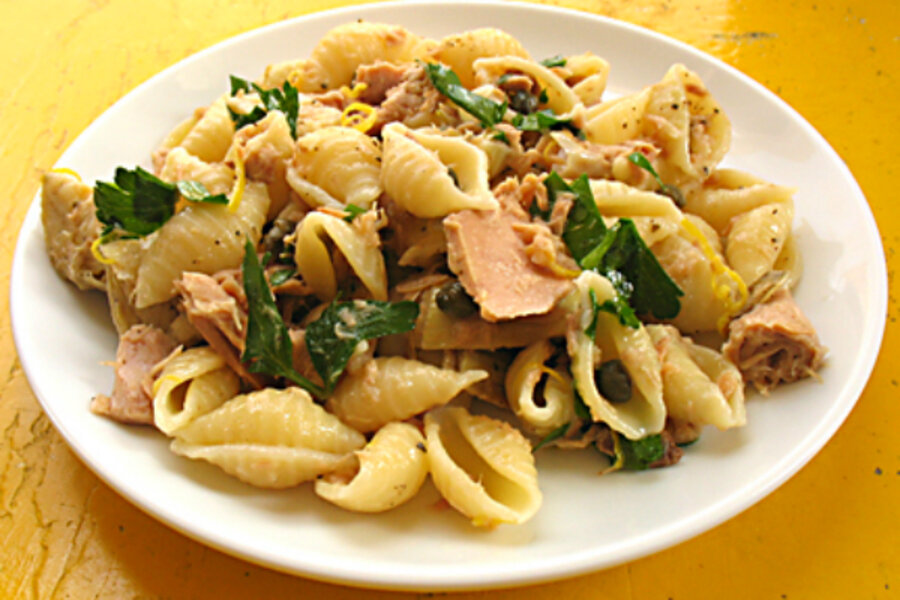Italian tuna pasta salad
This one of my summer favorites – a quick, colorful pasta that makes a great lunch or light supper. The only thing you cook is the pasta, so the kitchen doesn’t get too hot. It’s also another great example of just how versatile pasta can be once you think beyond red sauce.
In Italy, a no-cook pasta sauce like this is called a salsa cruda. The room temperature sauce slightly cools the cooked pasta, and the pasta slightly warms the sauce, making for a meal that feels less heavy than many pasta dishes. The shells catch bits of tuna and the other ingredients, delivering big taste with each bite.
There are so many wonderful flavors at play in this dish too – garlic, lemon, parsley, tuna, artichoke hearts … and my favorite, the briny tang of the capers. They combine for a fresh, bright meal that just tastes like summer. In fact, I’ve been known to make it as a winter lunch for that very reason.
A note about the tuna. For this dish, bring out the good stuff – quality tuna packed in olive oil. The olive oil becomes part of the sauce. I use a brand imported from Italy. As you can see in the photo, the quality of the flesh is far superior to the ground-up mush you often find in canned tuna. Spain also produces excellent olive oil-packed tuna, so whichever you can find locally will work.
Pasta Shells with Italian Tuna and Artichokes
Serves 4
For the salsa cruda:
2 6-ounce [168 g] cans imported Italian tuna in olive oil
1 6-ounce [168 g] jar artichoke hearts, drained, bigger pieces sliced in half lengthwise
1/4 cup [60 ml] capers, drained
grated zest and juice of 1 lemon
1 large garlic clove, minced
1/2 cup [120 ml] chopped fresh flat-leaf parsley leaves [see Kitchen Notes]
freshly ground black pepper to taste
12 ounces [340 kg] medium pasta shells [see Kitchen Notes]
Bring a large pot of water to boil to cook pasta. While water is coming to a boil, mix the salsa cruda ingredients in a large bowl, big enough to hold the pasta as well, once it’s cooked. Do not drain the tuna – add the olive oil it’s packed in to the bowl. Break up larger chunks of tuna into bite-sized pieces.
When water comes to boil, salt it generously, then cook pasta according to package directions, until al dente. Drain pasta, add to salsa cruda and toss. As the hot pasta mixes with the salsa, the fragrances you’d been noticing as you worked with the ingredients will explode. Divide into four pasta bowls or plates and serve.
Kitchen Notes
Parsley. This under-appreciated herb provides a perfect foil for some of the bigger tastes in this dish. Particularly the garlic, since parsley has long been touted as a natural breath freshener. But with summer gardens in full swing, feel free to substitute or add other herbs. Basil also works very well with this recipe.
Easy on the pasta. When you add the cooked pasta to the salsa cruda, start with about 2/3 of it and stir it in. Then judiciously add the rest, a little at a time. I generally end up adding almost all of the 12 ounces, but you don’t want the pasta to overwhelm the other ingredients. Pasta is cheap. When you mix looks about right, throw out any extra cooked pasta you have left.
Also, feel free to substitute pastas. I like the shells because they scoop up bits of the salsa ingredients. But farfalle or any other short pasta would do too. I wouldn’t use long pasta, though. This isn’t the kind of sauce that clings to noodles.
Related post on Blue Kitchen: Six Cool Recipes for Summer







